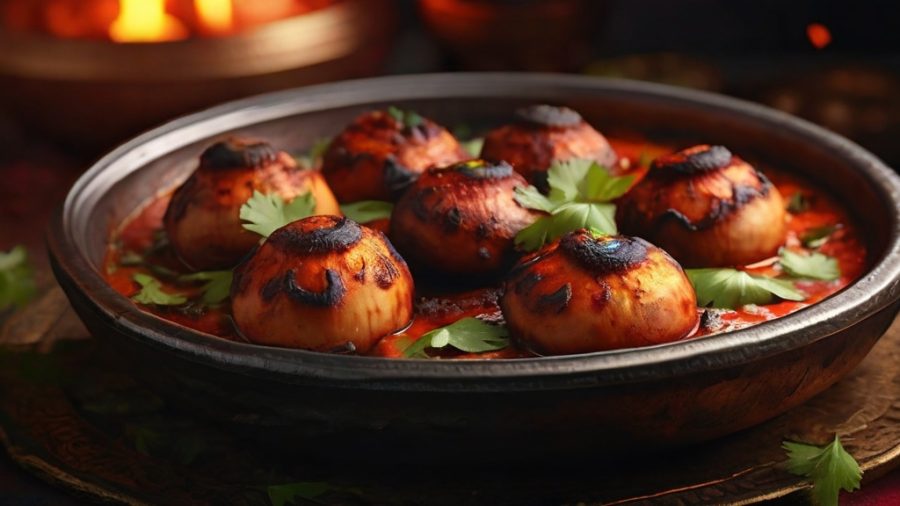Exploring the Rich Flavors of Tandoori Mushroom: A Delightful Indian Culinary Experience

Introduction
Indian cuisine is renowned worldwide for its vibrant flavors, aromatic spices, and diverse range of dishes. Among the plethora of culinary delights that Indian cuisine offers, Tandoori Mushroom stands out as a tantalizing vegetarian option that captivates the taste buds with its smoky, spicy, and savory essence. Originating from the traditional clay ovens of the Indian subcontinent, Tandoori Mushroom has become a beloved dish, celebrated for its unique blend of flavors and textures.
The History of Tandoori Cuisine
The roots of Tandoori cuisine can be traced back to the North Indian state of Punjab, where it emerged as a staple of Punjabi cuisine. The word “Tandoor” refers to the traditional cylindrical clay oven used for cooking in Indian households and restaurants. Originally, Tandoori dishes were prepared using marinated meats, such as chicken, lamb, or fish, skewered and cooked in the intense heat of the Tandoor, resulting in tender, succulent delicacies.
The Evolution of Tandoori Mushroom
As vegetarianism gained popularity in India and abroad, chefs began experimenting with Tandoori cooking techniques to create meat-free alternatives. Thus, Tandoori Mushroom was born. This innovative dish replaces meat with plump, juicy mushrooms, which are marinated in a blend of yogurt, spices, and aromatic herbs, then roasted in the Tandoor until they acquire a charred, smoky exterior while remaining tender and flavorful on the inside.
Ingredients and Preparation
The key to the tantalizing flavor profile of Tandoori Mushroom lies in its marinade, which typically includes yogurt, ginger, garlic, cumin, coriander, turmeric, garam masala, and chili powder. The mushrooms are cleaned and scored to allow the marinade to penetrate, then left to marinate for several hours or overnight, allowing the flavors to infuse deeply into the mushrooms.
Once marinated, the mushrooms are skewered and cooked in the Tandoor, imparting a delicious smoky aroma and charred appearance. Alternatively, they can be grilled or baked in a conventional oven for similar results. Garnished with fresh cilantro and a squeeze of lemon juice, Tandoori Mushroom is served piping hot, accompanied by mint chutney, sliced onions, and naan bread or rice.

Flavors and Texture
Tandoori Mushroom offers a symphony of flavors that dance on the palate with each bite. The marinade infuses the mushrooms with a rich combination of spices, yielding a complex and robust taste profile that is simultaneously tangy, spicy, and aromatic. The smoky char from the Tandoor adds depth to the dish, while the tender texture of the mushrooms provides a satisfying contrast to the crispy exterior.
Health Benefits
In addition to its delightful taste, Tandoori Mushroom also boasts numerous health benefits. Mushrooms are low in calories and fat but rich in essential nutrients, including vitamins, minerals, and antioxidants. The yogurt-based marinade provides probiotics and protein while being lighter and lower in fat compared to traditional Tandoori meats. Thus, Tandoori Mushroom offers a nutritious and wholesome option for vegetarians and health-conscious diners alike.
Conclusion: Tandoori Mushroom exemplifies the ingenuity and versatility of Indian cuisine, offering a delicious and satisfying vegetarian alternative to traditional Tandoori dishes. With its vibrant flavors, aromatic spices, and wholesome ingredients, Tandoori Mushroom is sure to tantalize the taste buds and leave a lasting impression on anyone fortunate enough to savor its culinary delights. Whether enjoyed as an appetizer, side dish, or main course, Tandoori Mushroom continues to enchant food enthusiasts around the world, showcasing the richness and diversity of Indian gastronomy.

+ There are no comments
Add yours